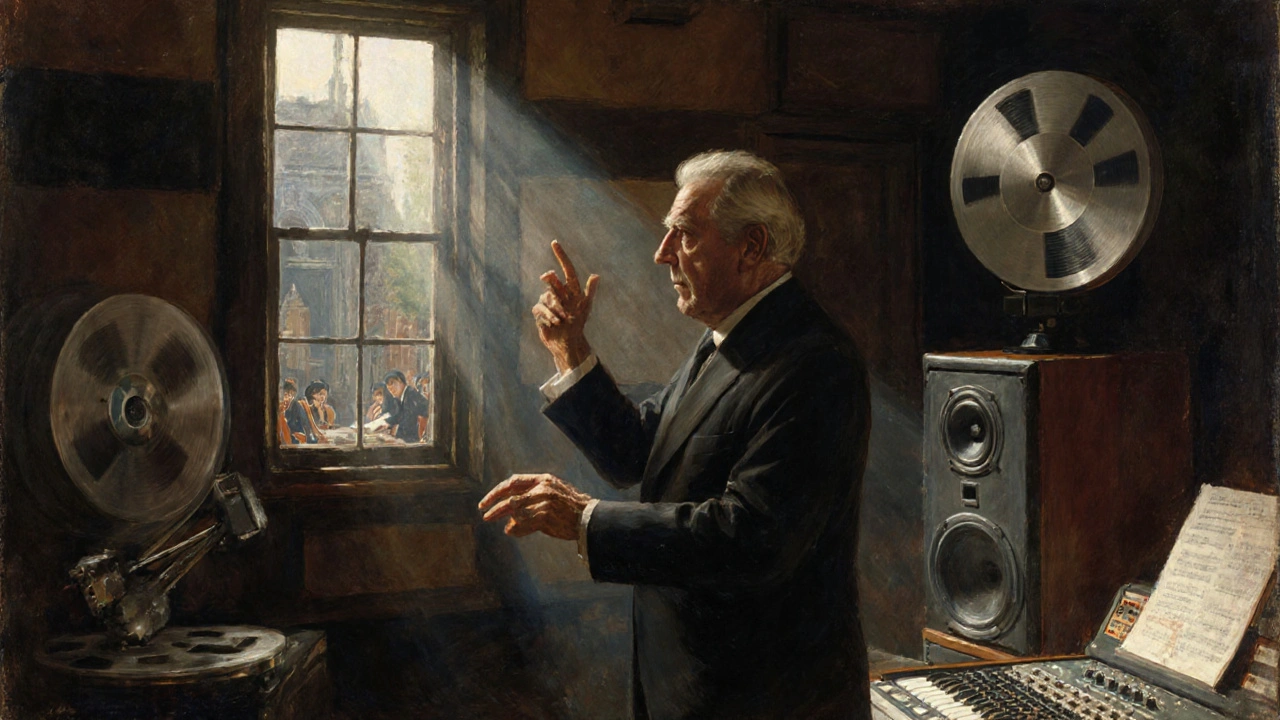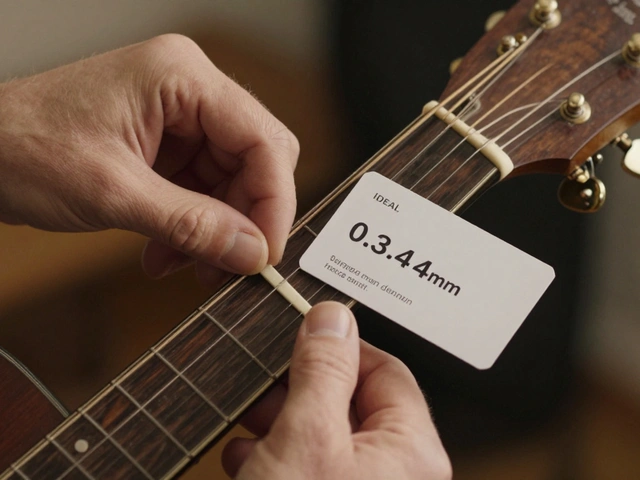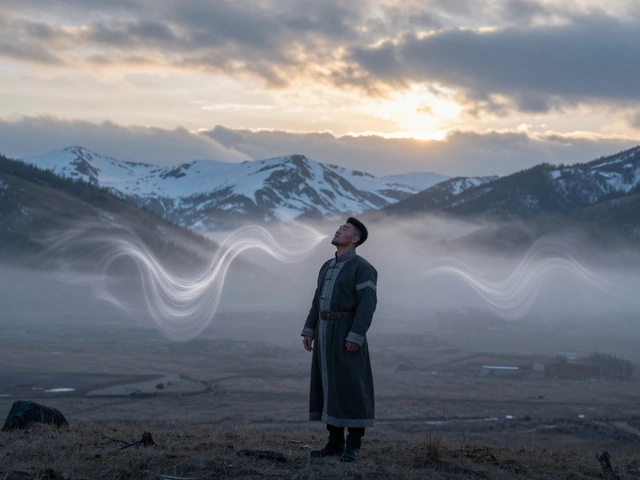Most people know the names of the frontmen, the guitar gods, the drummers who smashed kits into splinters. But rock music didn’t rise on stage lights and screaming fans alone. It was built by people who never took a bow, never got their face on a magazine cover, and rarely got a credit beyond a tiny line in the liner notes. These are the unsung heroes of rock music - the ones who made the sound possible, the vibe real, and the records last.
Session Musicians: The Invisible Architects
Think of the opening riff of Whole Lotta Love. That’s Jimmy Page, right? Maybe. But the iconic wah-wah tone? That came from a session guitarist named John Paul Jones - yes, the same guy who later became Led Zeppelin’s bassist - playing a guitar part Page didn’t have time to nail. That’s the thing about session players: they show up, they fix what’s broken, and they disappear.
In the 1960s and 70s, studios in Los Angeles, Nashville, and London were filled with musicians who could play anything, anytime. The Wrecking Crew - a group of L.A. studio pros - played on hits by The Monkees, The Byrds, and even Frank Sinatra. They didn’t care if they were playing pop, rock, or country. They just made it sound good. One of them, Carol Kaye, played bass on over 10,000 recordings. She’s on California Girls by The Beach Boys, Daydream Believer by The Monkees, and countless others. Yet her name never appeared on the front of the album.
These musicians weren’t background noise. They were the glue. When a band couldn’t nail a part, when a producer needed a specific feel, when a song needed a pedal steel, a horn section, or a harpsichord - they showed up with their gear and made it happen. No ego. No interviews. Just perfect takes.
Producers: The Sound Doctors
Producers aren’t just people who tell bands what to do. They’re the ones who hear the song before it exists. They’re the ones who know when a drum fill is too long, when a vocal needs reverb, when a guitar tone is flat. And they’re the ones who risk their reputation to make it work.
George Martin didn’t just produce The Beatles. He taught them how to use the studio as an instrument. He added the orchestral swell to A Day in the Life, suggested the reversed guitar solo on Rain, and convinced them to record Tomorrow Never Knows with tape loops and Leslie speakers. Without him, The Beatles might have been a great pop band. With him, they became something timeless.
Bob Rock took Metallica from raw thrash to polished power on The Black Album. He didn’t change their sound - he amplified it. He made James Hetfield’s rhythm guitar cut like a knife. He turned Lars Ulrich’s drums into thunder. He didn’t get a Grammy for that album - the band did. But Rock’s fingerprints are all over it.
And then there’s Rick Rubin, who took Slayer from speed metal to primal aggression on Reign in Blood, and then turned Johnny Cash into a haunting folk legend with his American Recordings series. He stripped everything away - no effects, no fluff - just voice, guitar, and silence. That’s the power of a producer who knows when to do nothing.

Engineers: The Sonic Alchemists
Producers dream. Engineers make it real. They’re the ones who set up mics, calibrate levels, tweak EQs, and run tape machines until their hands ache. They don’t get credit for the melody, but they’re the reason it sounds like it’s coming from inside your chest.
Glyn Johns recorded The Rolling Stones’ Beggars Banquet and The Who’s Who’s Next. He didn’t use fancy gear. He used two mics on a drum kit, one on the bass amp, and one on the guitar. He let the room breathe. That’s why those albums still sound alive 50 years later.
Bruce Swedien worked with Michael Jackson, but he also engineered Exile on Main St. by The Rolling Stones. He was the one who captured the muddy, drunken, glorious sound of Keith Richards playing in a French villa with a tape recorder in his pocket. He didn’t clean it up. He made it feel like you were there - sweat, smoke, and all.
Modern rock still relies on these skills. When Foo Fighters recorded Wasting Light in Dave Grohl’s garage, they used analog tape. The engineer, Butch Vig, had to manually adjust levels as the tape warmed up. He didn’t have a computer to fix mistakes. He had his ears. And his patience.
The Road Crew: The Silent Saviors
When the lights go up, the crew is already there. When the show ends, they’re still there - packing amps, fixing broken cables, hauling gear through rain, snow, and midnight highways. They’re the ones who make sure the singer doesn’t fall off the stage, the guitar doesn’t go silent mid-solo, and the drums don’t collapse under the weight of a 20-minute drum solo.
Back in the 1970s, Led Zeppelin’s crew - including Richard Cole and Benji LeFevre - traveled with 15 tons of equipment. They built stages in fields, fixed broken pedals with duct tape, and slept on the bus while the band partied. They didn’t get paid like the band. They got paid in exhaustion, bruises, and stories no one would believe.
Today, it’s the same. A touring band might have 10 people on stage. But they need 25 behind the scenes: riggers, techs, drivers, merch handlers, sound checkers. One tour manager told me he once fixed a broken pedal by soldering it with a lighter and a paperclip - just before the band walked on. The crowd never knew. The band didn’t either. But the show went on.

Label Executives and A&R: The Risk-Takers
Rock music didn’t survive because bands were brilliant. It survived because someone believed in them when no one else did.
John Hammond signed Bob Dylan, Bruce Springsteen, and Billie Holiday. He heard something in a kid playing harmonica in a Greenwich Village cafe and bet his career on it. He didn’t care if the kid didn’t sing in tune. He heard the truth in his voice.
Chris Blackwell signed Bob Marley to Island Records, even though no one in the U.S. had ever heard reggae. He didn’t care. He believed the music mattered. He pushed Marley into rock audiences, even when labels told him it wouldn’t sell.
And then there’s Tom Zutaut, who signed Guns N’ Roses to Geffen Records after hearing them play in a club with a broken amp and a broken snare drum. He didn’t see a messy band. He saw raw energy. He gave them the studio time, the budget, and the freedom to make Appetite for Destruction - the best-selling debut rock album of all time.
These people didn’t write songs. They didn’t play instruments. But they gave rock its chance.
The Legacy: Why They Matter
Rock music isn’t about the stars. It’s about the system that lets stars shine. Without session players, the songs would be thin. Without producers, the sound would be flat. Without engineers, the recordings would be lifeless. Without crew, the shows would fall apart. Without A&R, the bands would never have been heard.
That’s why the greatest rock albums don’t just have great musicians. They have great teams. The Who’s Who’s Next wasn’t just Pete Townshend’s vision. It was Glyn Johns’ mic placement, Keith Moon’s wild drumming, and the studio tech who kept the tape from melting during the 12-hour sessions.
Today, with digital tools and auto-tune, it’s easier to make music alone. But the soul of rock still comes from collaboration. From the guy who rewired a faulty amp at 3 a.m. The woman who tuned the bass by ear because the tuner died. The producer who said, “Play it again - but this time, like you mean it.”
Rock music didn’t need heroes on stage. It needed heroes behind the scenes. And they’re still out there - in garages, studios, and tour buses - making sure the next great song doesn’t just get recorded. It gets remembered.
Who were the Wrecking Crew?
The Wrecking Crew was a group of Los Angeles-based session musicians active from the 1960s to the 1980s. They played on hundreds of hit records, including songs by The Monkees, The Beach Boys, and Frank Sinatra. Key members included Carol Kaye (bass), Hal Blaine (drums), and Tommy Tedesco (guitar). They never toured or released albums under their own name, but their playing defined the sound of American pop and rock during that era.
Why don’t session musicians get credited?
In the 1960s and 70s, record labels often didn’t list session players to avoid paying royalties or to keep the focus on the band. Bands were marketed as self-contained units, even when they relied on outside musicians. Many session players were paid flat fees and signed away credit rights. Today, credits are more common, but many still go unlisted due to contract loopholes or label politics.
Can you name a famous rock song made possible by an engineer?
Yes - Stairway to Heaven by Led Zeppelin. Engineer Andy Johns captured the song’s dynamic range by using minimal mics and recording Jimmy Page’s acoustic guitar in a stone stairwell at Headley Grange. The natural reverb, the gradual build, the emotional swell - all came from Johns’ decisions on mic placement and tape compression, not from Page’s playing alone.
Do modern rock bands still rely on unsung heroes?
Absolutely. Even with digital tools, bands still need engineers to mix live sound, techs to fix gear on tour, producers to shape their sound, and label reps to fund their records. Foo Fighters’ Dave Grohl recorded Wasting Light on analog tape in his garage - and hired Butch Vig to engineer it. Without Vig’s expertise, the album wouldn’t have sounded as raw or powerful.
Who was the most influential producer in rock history?
George Martin is often called the Fifth Beatle for good reason. He transformed The Beatles from a pop act into experimental pioneers by introducing orchestral arrangements, tape loops, and studio effects. But Rick Rubin also reshaped rock by stripping bands down to their core - from Slayer to Johnny Cash. Both changed the genre, but Martin laid the foundation. Rubin expanded it.
If you’ve ever headbanged to a classic rock anthem, you owe it to someone who never got a spotlight. They didn’t need it. They just loved the music enough to make it sound unforgettable.





